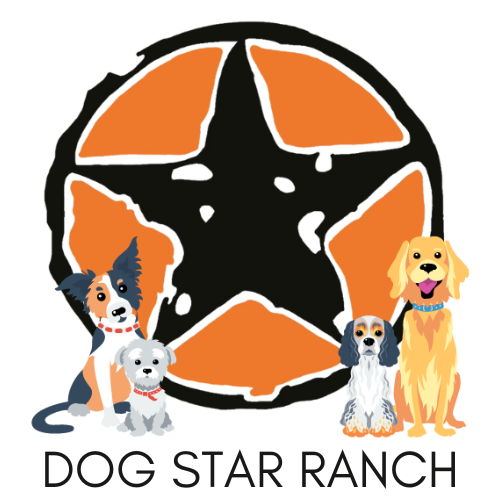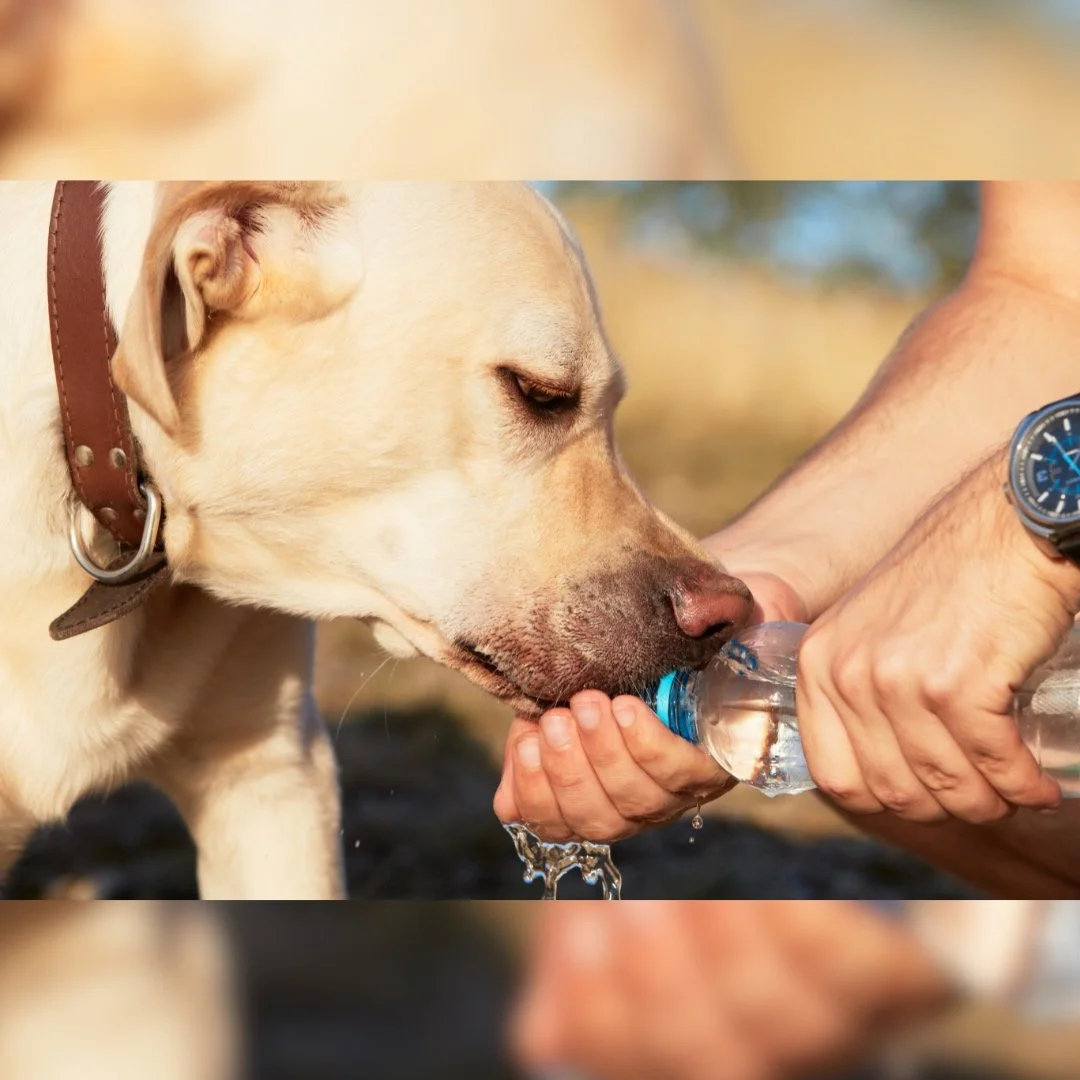A Pet Parent’s Guide to Summer Safety
Summer is a time for sunshine, adventures, and making memories with your furry best friend. From beach days to park plays, there are countless ways to enjoy the summer months together. But while you’re out soaking up the sun, it’s important to keep your pup’s safety in mind.
In this blog, we’ll dive into essential Summer Safety Tips to help you and your dog have the best — and safest — summer ever! We’ll cover:
The importance of recognizing the signs of overheating
What to do if your dog shows signs of heatstroke
Common summer dangers like paw burns, dehydration, and sunburn
Beach safety tips for your pup
The age-old question: to shave or not to shave?
How to prepare your dog for Fourth of July festivities
Whether you’re planning big adventures or just chilling in the yard, these tips will help ensure your dog stays happy, healthy and safe all summer long.
Before we jump into Summer Safety Tips, let’s take a moment to learn how dogs regulate their body temperature — because it’s quite different from how humans do it.
How Do Dogs Sweat:
Unlike us, dogs don’t sweat all over their bodies. Instead, their main cooling system is panting. When a dog pants, they’re rapidly breathing in and out, which encourages moisture to evaporate off their tongue and respiratory tract. This process works similarly to how sweat cools us — evaporation helps release heat from the body. This method is most effective when a dog is well-hydrated and the air is dry enough to support quick evaporation. But here’s the catch:
On hot, humid days, panting doesn’t work as well because evaporation slows down — meaning your dog can overheat much faster.
Dogs also use other ways to cool down:
Conduction - Lying on a cool surface, like tile or shaded grass, helps transfer heat away from their bodies
Vasodilation - Dogs can expand blood vessels, especially around the ears and face, to bring warmer blood closer to the skin’s surface, where it can release heat
Sweat Glands (sort of) - Dogs have merocrine sweat glands (they function similarly to human sweat glands), but only in their paw pads. These glands help with cooling, but they’re not nearly as effective as full-body sweating
Because their cooling mechanisms are limited, dogs are more susceptible to overheating. Even in temperatures as mild as 75°F, your dog’s internal body temperature can rise dangerously high, especially if they’re stuck in a hot car or exercising in the sun. Understanding how your dog stays cool is key to keeping them safe all summer long. Now that we’ve covered the basics, let’s learn what to watch for and how to protect your pup during those sizzling summer days.
What is Heat Stroke?
Heat stroke (heatstroke), also known as heat exhaustion, is a serious and potentially life-threatening condition that occurs when a dog’s body overheats and can no longer regulate its temperature effectively. This can result in organ failure, brain damage, or even death if not treated immediately.
Dogs overheat when they generate more body heat than they can release — especially in hot, humid weather or after intense activity. If a dog becomes dehydrated and loses too many fluids, they may experience heat exhaustion. If left untreated, this can escalate to heat stroke, which requires immediate veterinary attention.
A dog is considered to be in heat stroke when its body temperature exceeds 105°F. Some breeds, such as Bulldogs, Pugs, and other brachycephalic (flat-faced) dogs, are especially vulnerable due to their restricted airways.
Other Summer Dangers for Dogs
Here are a few other seasonal dangers to watch out for and tips to keep your dog safe and happy all season long.
Hot Pavement & Paw Burns
Did you know that pavement can get dangerously hot in the summer — even if the air feels okay? Asphalt and concrete can be 40-60°F hotter than the surrounding air, reaching up to 125°F on a sunny day when it’s only 77°F outside.
How to Test Pavement Temperature:
Use the touch test:
Place the back of your hand on the pavement for a few seconds. If it’s too hot for your hand, it’s too hot for your dog’s paws.
Even if your hand passes the pavement test, it’s important to keep your dog cool during your stroll, so here are some Safe Walking Tips:
Walk early in the morning or late in the evening
Stick to grassy, shaded paths
Carry water and take frequent breaks
Use dog booties or apply Musher’s Secret or some other paw wax for protection
Dehydration
Dogs can become dehydrated quickly, especially in hot weather when they’re panting more.
Signs of Dehydration:
Dry nose or gums
Sunken eyes
Lethargy or weakness
If you notice signs of dehydration, contact your vet immediately.
Prevention Tips:
Always offer fresh, cool water
Provide shady rest areas
Offer ice cubes or frozen dog-safe broth treats
Beach Dangers for Dogs
A beach day can be a blast! Just keep these health and safety concerns in mind:
Heat Stroke
Watch for drooling, confusion, or collapse
Provide shade and water
Avoid peak heat hours
Drowning
Use a dog life vest
Never leave your dog unattended in the water
Know your dog’s swimming ability and energy levels
Burned Paw Pads
Sand can get dangerously hot — test it first!
Use booties or Musher’s Secret
Provide shaded rest areas or a towel to sit on
GI Blockage from Sand
Dogs who eat sand (intentionally or accidentally) may develop blockages. Keep an eye on your pup and discourage eating sand.
Warning Signs:
Vomiting or diarrhea
Abdominal pain
Lethargy or loss of appetite
Sunburn
According to the American Kennel Club, breeds with light fur, thin coats, or hairless varieties like the Chinese Crested, Xoloitzcuintli, or American Hairless Terrier are most at risk. But even furry dogs can get sunburned — especially on the nose, ears, and belly.



Symptoms of Sunburn:
Red, flaky, or sensitive skin
Itching or discomfort
Prevention:
Use dog-safe sunscreen
Apply to exposed areas like the nose, ears, belly, and groin
Re-apply every 4-6 hours
Dog-Safe Sunscreen
Things to Avoid:
Zinc Oxide
PABA
Fragrances (opt for unscented or lightly scented products)
Both of these ingredients are toxic to dogs if ingested.
Instead, look for non-toxic ingredients/natural ingredients like coconut oil, aloe vera, or vitamin E. Does it have UVA and UVB protection? Both of these are essential for protecting your dog from sunburn and long-term skin damage.
Built-In Sun Protection: The Basics on Fur and Temperature
That fur coat may look unbearably warm in the middle of July, but it actually serves as a natural sun shield and temperature regulator. According to the American Kennel Club:
“When a dog is hot, it not only pants to regulate its body temperature (since dogs don’t sweat through their skin like humans), but their coat traps the air closest to the skin and keeps it the same temperature as their ideal body temperature.”
How Does a Dog’s Coat Keep Them Cool?
A dog’s coat works to both cool and warm them, depending on the season. This is especially true for double-coated breeds, thanks to these key features:
Double Coat
Many breeds have a double coat — a dense undercoat beneath a longer, protective outer coat. The undercoat traps air, acting as insulation that helps maintain a stable body temperature, even in the heat.
Piloerection
Dogs can raise their fur (a process called piloerection) to create space between their skin and outer coat. This layer of air helps regulate body temperature much like insulation in a house.
Undercoat Maintenance
Brushing out loose fur from the undercoat is essential. A clean, well-maintained undercoat allows for better airflow and prevents trapped heat. Mats or compacted fur block airflow and increase the risk of overheating.
Should you shave your dog in the summer?
No, not if your dog has a double coat. Examples include Golden Retrievers, Border Collies, German Shepherds, Labrador Retrievers, and Siberian Huskies.





Shaving removes their natural insulation and can actually increase their risk of overheating and sunburn. Not only that, but shaving double-coated breeds could potentially cause long-term damage. The undercoat tends to grow back faster than the outer guard hairs, sometimes changing the coat’s texture, appearance, and ability to regulate heat.
Instead of shaving, ask your groomer to thin or trim the coat, leaving the outer guard hairs intact. If your dog’s coat is prone to matting, regular brushing is key to keeping them cool.
What about single-coated dogs?
Single-coated dogs can have very short or long hair, and the texture may be wiry, smooth, or curly — but all lack an insulating undercoat. Examples include Greyhounds, Boxers, Dalmatians, Poodles, Afghan Hounds, and Maltese.





Certain types of single-coated breeds may benefit from occasional trimming by a professional groomer, but shaving down to the skin should be avoided — always leave at least one inch of hair to protect from UV rays and skin irritation.
Fourth of July: Keeping Your Dog Safe and Calm
The Fourth of July is a time for celebration, but for many dogs, it’s one of the most stressful days of the year. But with a little preparation and care, you can help your dog stay calm, safe, and comfortable throughout the festivities.
Prepare in Advance:
ID and Microchip: Make sure your dog is wearing an up-to-date ID tag. If they’re not microchipped, talk to your vet. If they are, confirm that the contact info is current.
Desensitize to Loud Noises: If your dog gets anxious during loud events, consider behavioral training. Play recordings of fireworks or thunderstorms at a low volume while offering treats and praise. Gradually increase the volume over time to help them stay calm.
Consider Calming Aids: For anxious dogs, over-the-counter options like calming chews or CBD treats may help. For severe anxiety, talk to your vet about prescription medication.
From heat stroke prevention and paw protection to beach day prep and Fourth of July planning, taking a few simple precautions can make all the difference.
By staying informed and proactive, you’ll ensure your pup stays happy, healthy, and ready for every summer adventure.
Here’s to a season full of sunshine, wagging tails, and unforgettable memories — all while keeping your best friend safe and cool!








